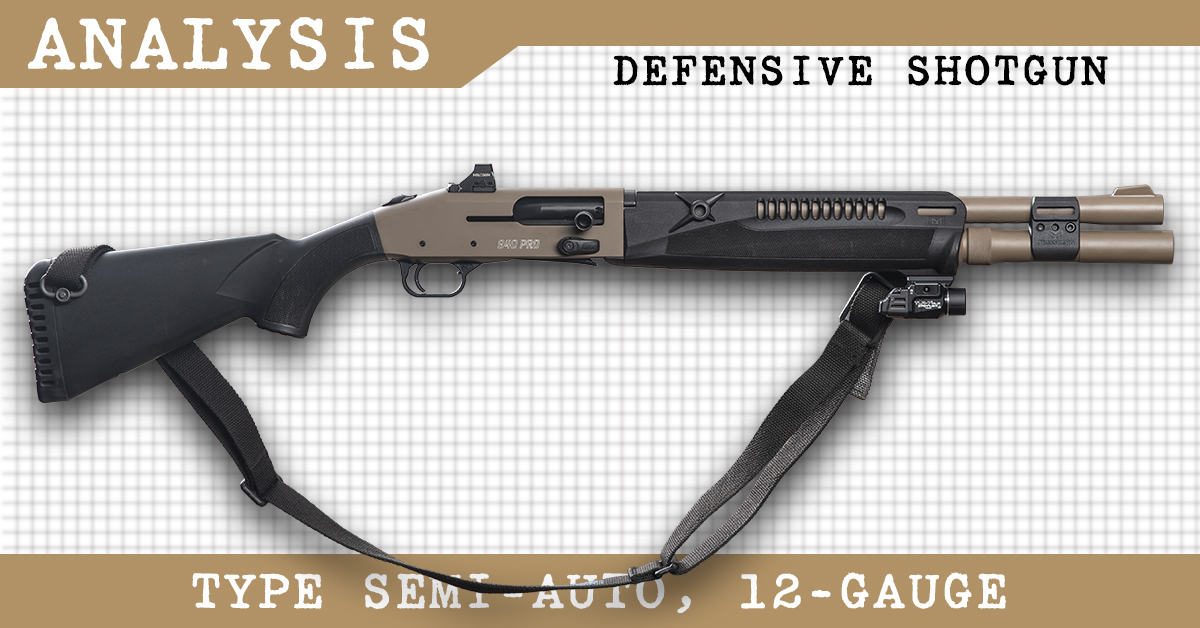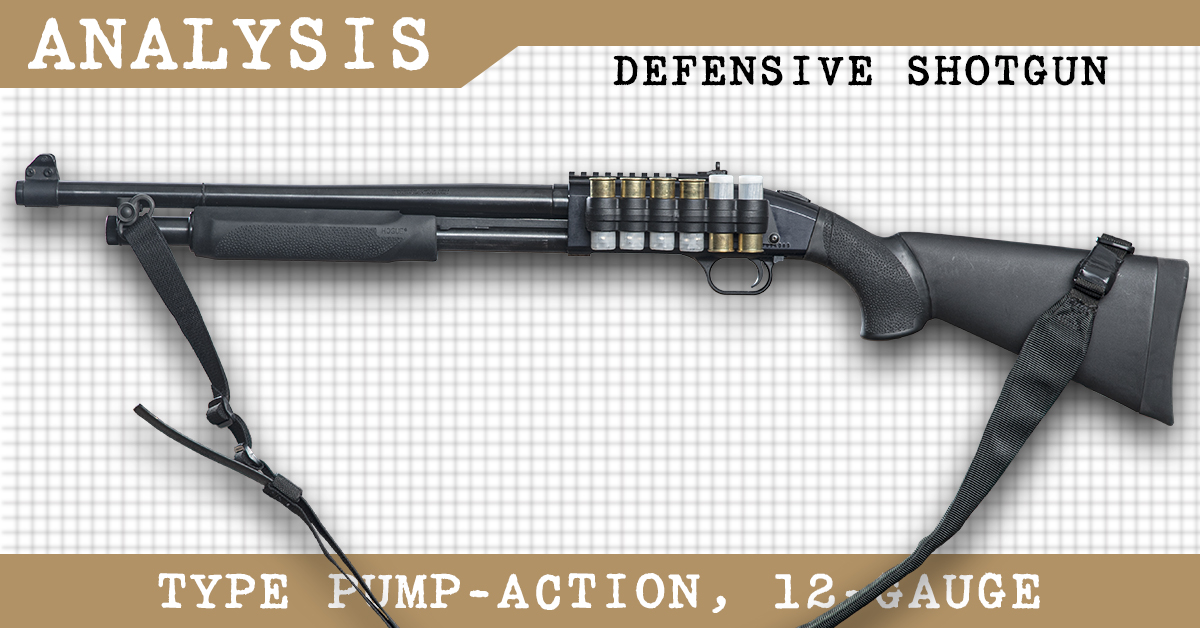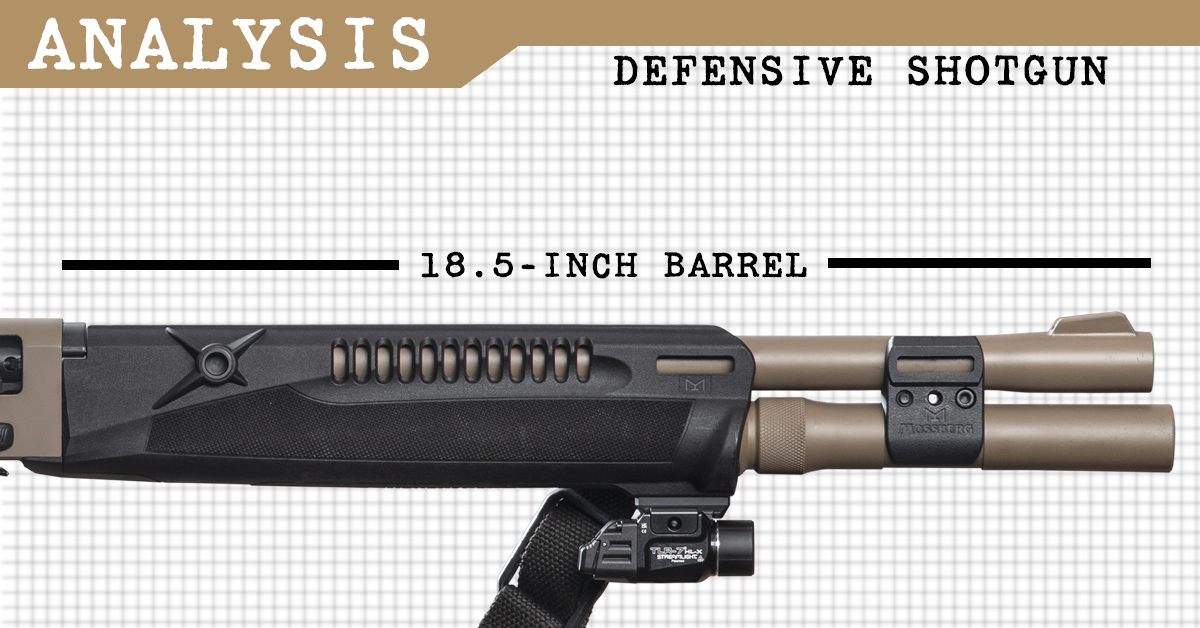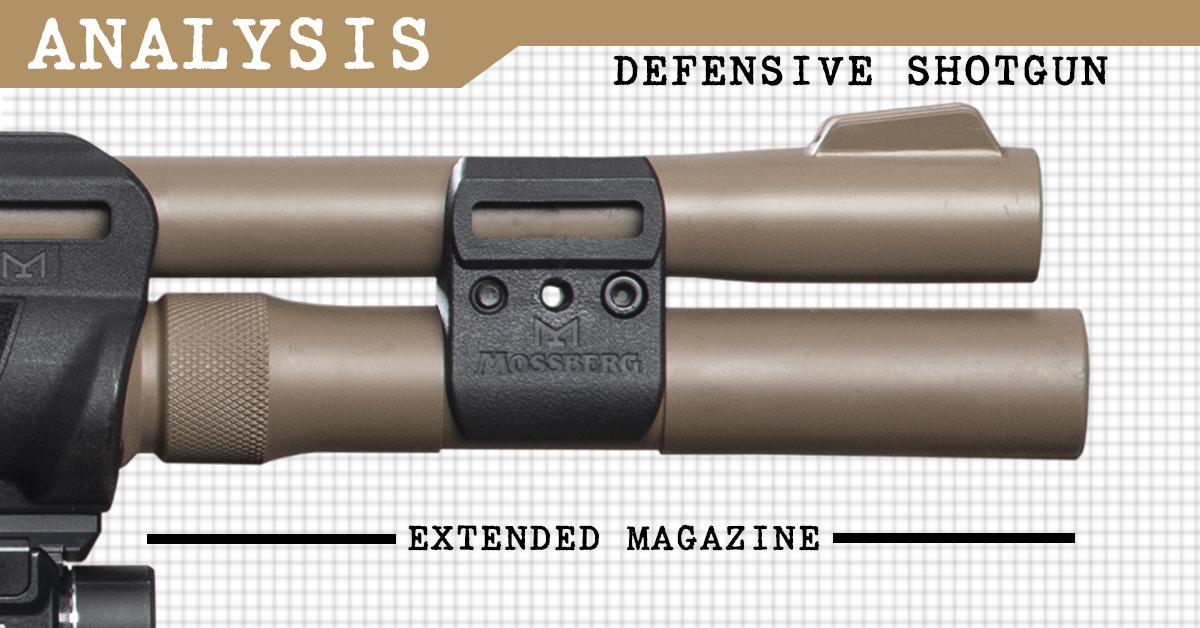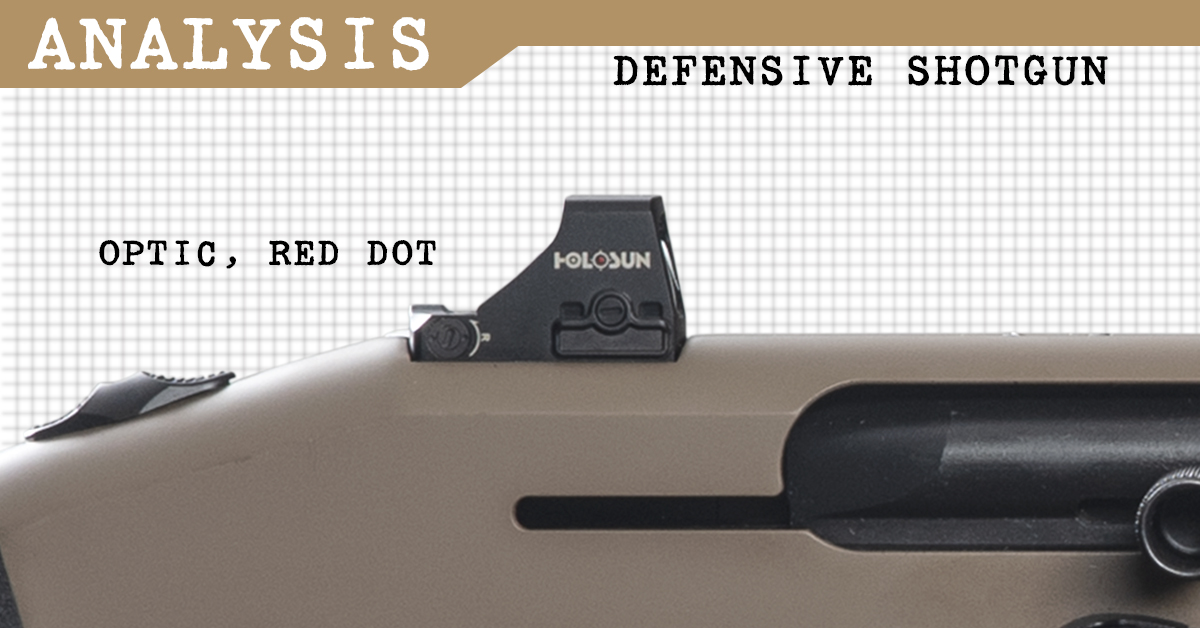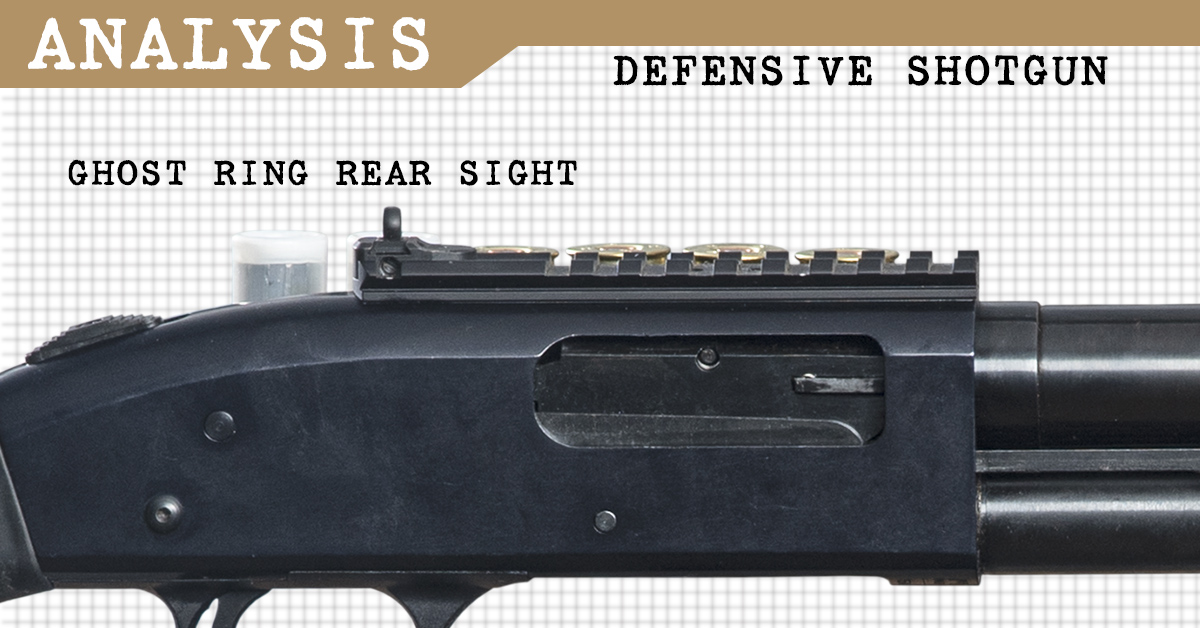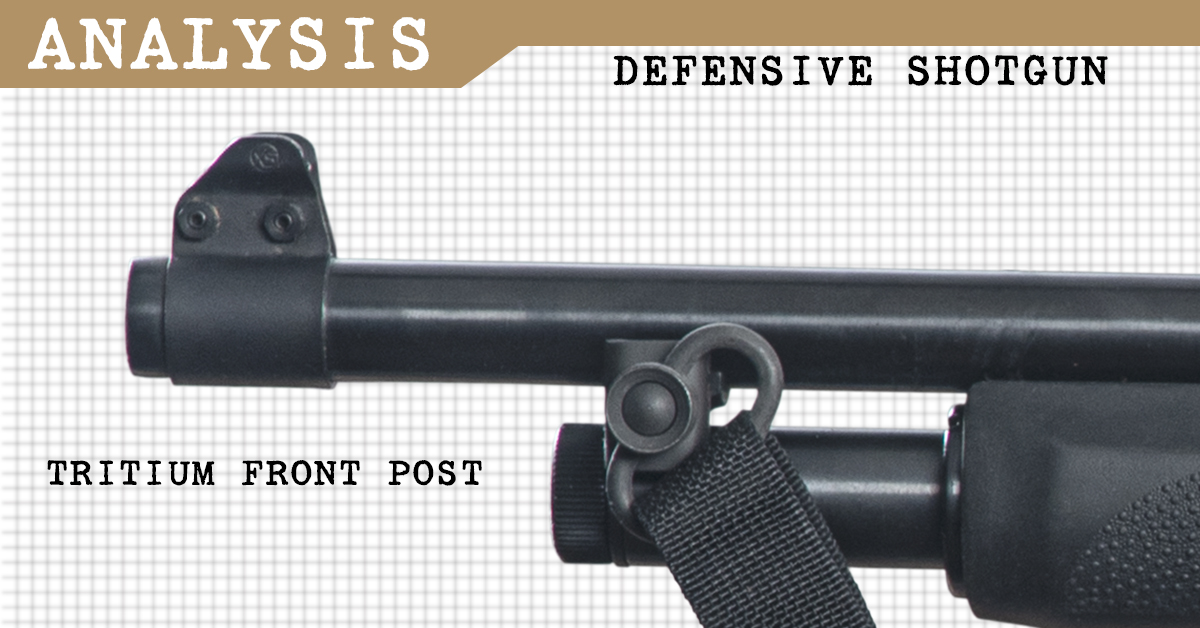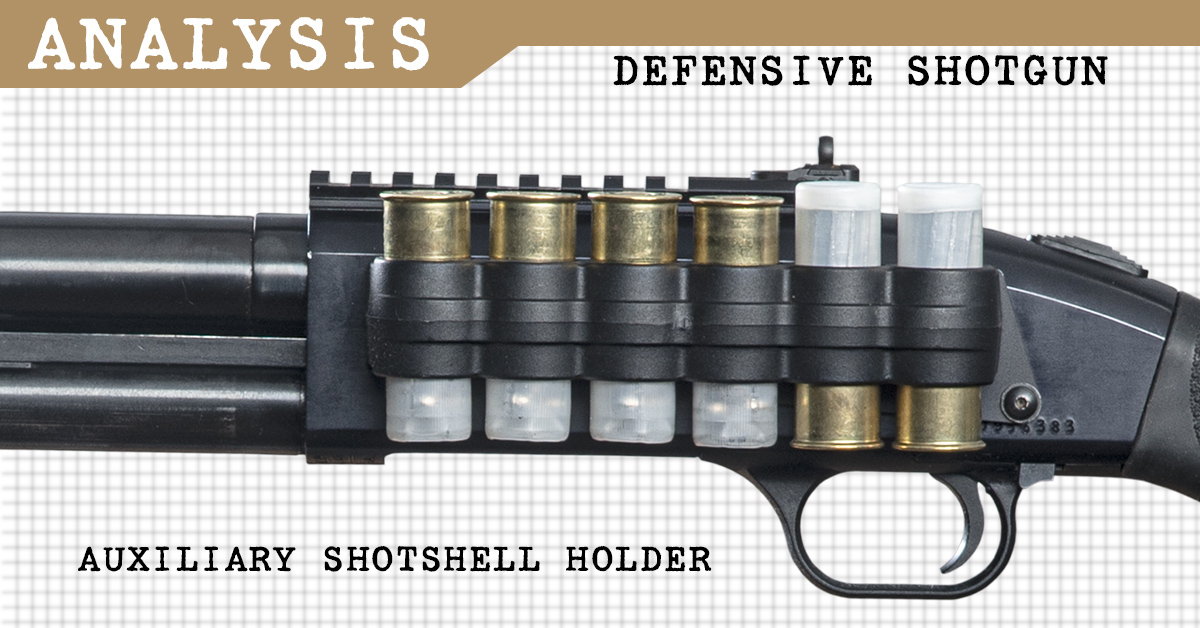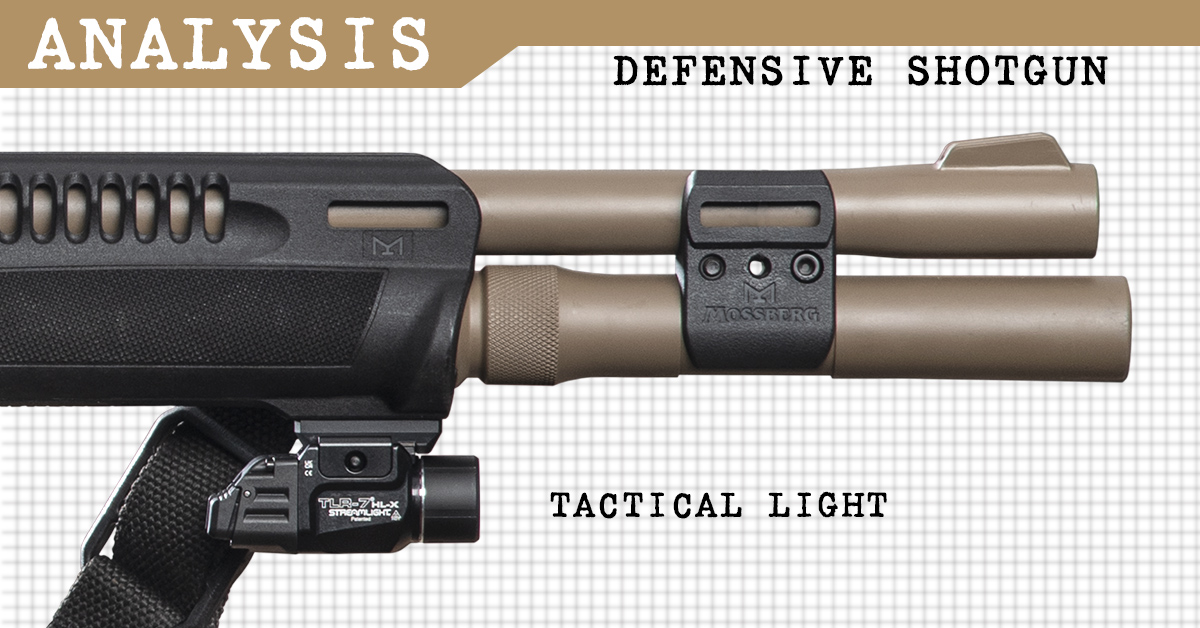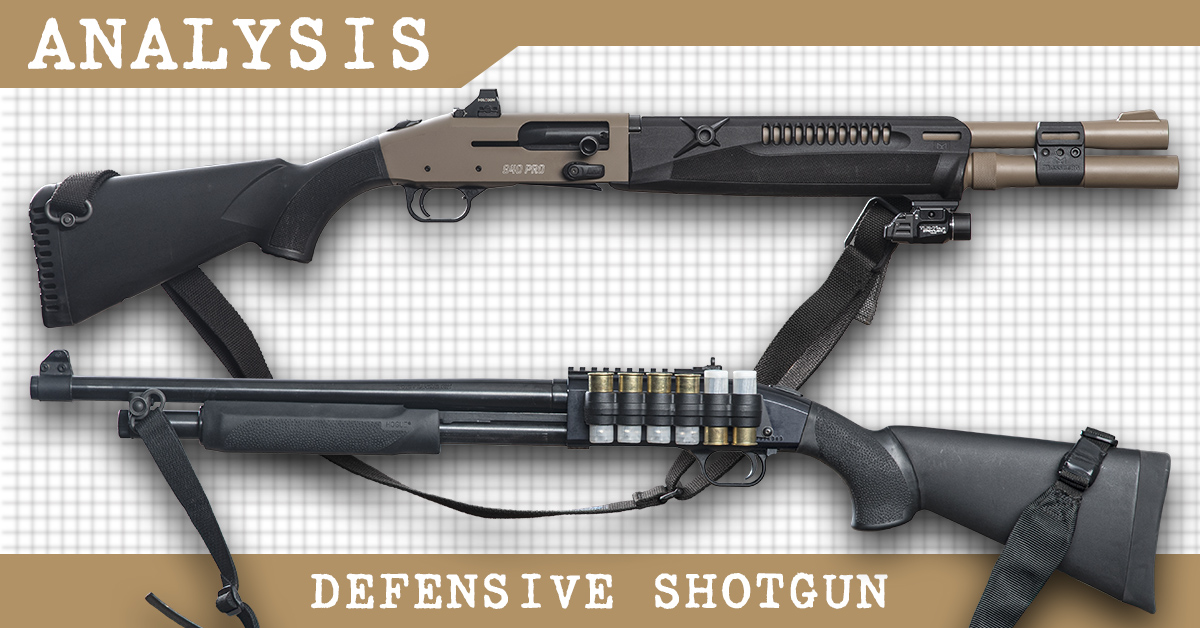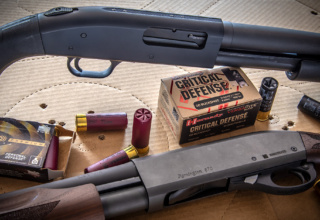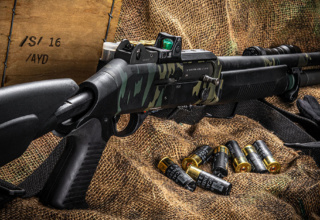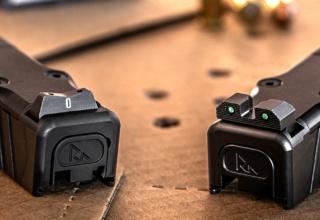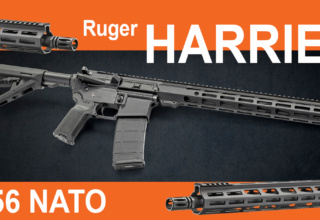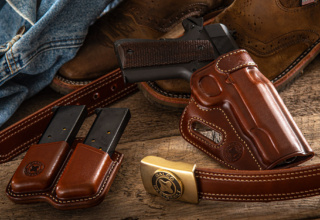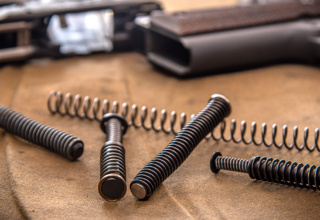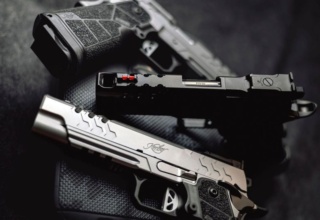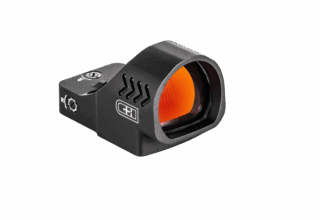A bare-bones shotgun can manage home protection duties, but a defensive shotgun outfitted with carefully selected equipment will shine the brightest in your darkest hour of need
by Rob Reaser
Most of us understand the need for customizing firearms to fulfill specific tasks. This has been a common practice, to varying degrees, since forever, but it really hit the Mainstreet mindset once the AR-15 emerged from the constraints of the 1994 Public Safety and Recreational Firearms Use Protection Act once the law expired in 2004. With its modular platform and potential for aftermarket innovation, the AR-15 led the way to the robust firearm aftermarket accessory industry we currently enjoy — not just centering on the AR platform but including pretty much every firearm platform on the market today.
Arguably the one firearm platform that runs right behind the AR in terms of purpose-driven upgrades and modifications is the defensive shotgun. Like the AR, fighting shotguns — those designated for personal or professional defense duties — are routinely altered to enhance their martial capability. Yes, even a pedestrian, off-the-rack field shotgun can serve the purpose of home defense, with single-shot and double-barrel shotguns having solved many problems over the centuries. But once your mind turns toward fighting with a shotgun, other considerations come to the fore.
This article is directed primarily at those readers who are thinking about purchasing a shotgun for home defense or who have already purchased a defensive shotgun and are ready to maximize its fighting capabilities. Here, we will examine the desirable characteristics of a fighting shotgun and the key upgrades to be considered.
Something our long-time readers understand is that we at Shoot ON tend to lean towards the less-is-more side of the firearm modification equation. In other words, alterations and accessorizing of a defensive gun should be limited to what you need and nothing you don’t. The more “stuff” you hang on a gun or the more complicated you make a firearm, the greater likelihood that you will get tripped up in a crisis. Proper training and gear should all point toward maximum efficiency and fluid operation under stress.
Barrel
For home defense applications, the shotgun, like any firearm intended primarily for close-quarter engagement, demands the shortest legal barrel possible. For now, that length is 18.5 inches for non-NFA shotguns.
The reason for the shortened barrel length is maneuverability. It is easier to control in tight quarters, it is less likely to hit walls or obstacles as you move through the confines of a home environment, and it reduces your visible signature as you enter a room or negotiate corners. The short barrel also tends to be quicker to shoulder than longer-barreled shotguns and it promotes faster target acquisition when engaging multiple targets.
Enhanced Capacity
The defensive shotgun is a balance of performance and payload. Loaded with #00 buckshot or slugs, the shotgun presents devastating and decisive firepower for threat elimination. The flip side is that ammo capacity is reduced relative to a handgun or carbine due to the size of the ammunition cartridges.
Most defensive shotguns — and we’re talking basic models — generally accommodate four or five rounds in the magazine tube and one in the chamber. While that may be sufficient for a typical home defense encounter, this is an example of more-is-better. To get more ammo on board, a good fighting shotgun will have an extended magazine tube that accepts an additional two or three 2 3/4-inch shotshells. The Mossberg 940 Pro Tactical SPX illustrated here allows for seven rounds in the magazine and one in the chamber, or 7+1. That’s a great start when jumping into a firefight.
Optic Sight System
One of the great fallacies spouted by the uninformed is that shotguns need only be “pointed in the general direction” of the target to achieve decisive hits. That is absolutely false. The shotgun must be aimed as carefully as any other firearm — especially if you intend to hit your target at typical home defense distances.
Some will argue that a bead front sight is all that’s needed for a defensive shotgun, and in the hands of an experienced shooter that may be true. We recommend removing that potential handicap altogether by employing a reliable red dot sight.
A red dot sight — particularly one that can be mounted low to the receiver — is the premiere sighting option in our opinion. As when mounted to a pistol or a carbine used for close-quarter engagement, the shotgun, sporting a quality red dot optic, will give you a more precise aiming point and a faster sight picture to more efficiently engage your target. This system also promotes shooting with both eyes open so that you can maintain situational awareness, and it lets you deliver precise shots in the kind of darkened environments in which you are most likely to deploy the shotgun.
Ghost Ring Rear and Tritium Front Post Sight System
Nearly every defensive shotgun receiver is drilled and tapped so that, if it doesn’t already come with some sort of rail system, one can be easily added. Add a rail and you can now mount most any red dot optic, with the correct adapter mount. Some folks, though, still prefer an always dependable and highly accurate front and rear open sight system. The upgrade options typically include a traditional front post and rear notched blade sight set — often with fiber-optic elements for enhanced low-light visibility — or a ghost ring rear and front post setup. Our pick is almost always the latter.
A ghost ring rear sight is simply a large ring, or aperture, mounted to the receiver. As you look through the ring and focus on the front sight, you see the out-of-focus circle. When the top of the front sight post is positioned in the middle of this “ghost ring,” you have your sight alignment. This is an exceptionally fast and accurate open sight system because the eye quickly and naturally aligns the front post to the center of the ghost ring. Most ghost rings provide a means for windage and elevation adjustment, so it is easy enough to zero your preferred shotshell loads.
Paired with a rear ghost ring is a front post sight. There is nothing complicated here. The rule, though, is that a front post on a defensive shotgun will almost always include protective “wings” on either side of the post, much like those found on AR- and AKM-platform front sights. This, of course, is to protect the front sight post from being damaged.
When upgrading your shotgun to a ghost ring and front post sight system, we recommend opting for a tritium front sight to boost low-light visibility. The system illustrated above, mounted on a Mossberg 500, is the ghost ring and rail plus the banded standard dot set from XS Sights.
Auxiliary Shotshell Holder
Due to the shotgun’s limited magazine capacity, an auxiliary shotshell holder should be considered must-have gear.
Shotshell holders come in two general styles — those mounted to the non-ejection port side of the receiver and those that secure to the gun’s buttstock. It is a matter of personal preference as to which to use, but we recommend receiver-mounted shotshell holders because of their mechanical efficiency.
With reloading speed being of utmost importance, the receiver-mounted holders position the shotshells close to the magazine well and ejection port. This requires less distance to move supplemental rounds from the holder and into the gun when compared to a stock-mounted shotshell holder. Furthermore, depending on where you place a stock-mounted holder, you may upset your grip or shoulder mount when transferring shotshells from the holder to the ejection port or magazine well. With the receiver-mounted holders, you can maintain (with practice) your firing hand grip and shoulder mount. Again…efficiency of movement and speed are important in a fighting shotgun.
There are a couple ways you can go with a receiver-mounted shotshell holder. The above illustration demonstrates the Vang Comp Exact-Fit Receiver Placard and 6-Shot Shotshell Card. This system uses an adhesive-backed loop design placard that applies to the receiver combined with a hook-backed shell carrier. Elasticized loops keep the shotshells in place. What we like about this system is that you can rip off the empty shell holder and install a loaded shotshell holder if you carry one on your kit.
There are also fixed-mount shotshell carriers that attach to your receiver, such as the SureShell Side Mount Carrier by Mesa Tactical seen here. Available in 4- and 6-round capacity, this is a rugged, not-going-anywhere system offered with aluminum or polymer carriers.
Sling Configurations
While some may consider a sling to be unnecessary or simply optional on a home defense shotgun, we beg to differ. A properly slung shotgun allows you release the weapon to use both hands — say, to remove an obstacle or carry a wounded family member — while maintaining possession and control of the firearm. Further, a sling worn cross-body allows you to retain the weapon should an aggressor try to take it from you. Also, a shotgun sling can be used just like a rifle or carbine sling to provide off-hand support and stabilization should you need to shoot a slug at distance.
The key factor in a fighting shotgun sling is that it should be worn cross-body, with the sling running from the far side of the buttstock, around the shooter’s back, to the near side of the forward attaching point. The illustration above demonstrates this.
Depending on how the factory shotgun is designed, this may be easy or somewhat challenging to accomplish. The 940 Pro Tactical SPX at top features QD swivel cups built into the stock and the forend plus M-LOK slots in the forend and barrel support that accept M-LOK sling swivel mount systems. The Mossberg 500 at the bottom had been fitted with a Hogue stock that had no attachment points. We previously covered how to modify a stock and install a sling on this gun, so check it out if you need to adapt your shotgun to a tactical-style sling system.
And as for the sling, it needs to be of the quick-adjust variety, such as the Viking Tactics sling or the Vickers Combat Application slings from Blue Force Gear seen here. The rapid, one-hand adjustment of these slings lets you keep the gun “high and tight” when moving or you can quickly loosen the sling when you need swim out of it.
Tactical Light
Regardless of whether you install a red dot or tritium open sight system on your defensive shotgun, we do recommend including a quality tactical light. Most deployments of a home defense shotgun will be in low-light or no-light conditions. Thus, it is imperative that you positively identify your target. This is especially true in a home environment where other family members may be on the move. The tragedy of failing to discern between a family member and a threat is incomprehensible.
A tactical light, such as the Streamlight TLR-7 HL-X seen here, is an ideal option for a fighting shotgun. Mounting the light can be a challenge, though, depending on your shotgun setup. Most lights are designed to mount to a short Picatinny rail, so if your gun has or can accommodate a rail somewhere on the forend, you’re good to go. If not, there are aftermarket solutions available. Most often this involves changing out the forend to one that is rail-friendly.
The shotgun is a diverse home defense platform that, when intelligently outfitted with quality gear and deployed with a foundation built on good training and practice, can end a lethal threat more decisively than most civilian weapons. Starting with a reputable and reliable shotgun and upgrading with carefully chosen accessories (don’t overdo it!) will deliver the capabilities you need to keep you and your family safe.

